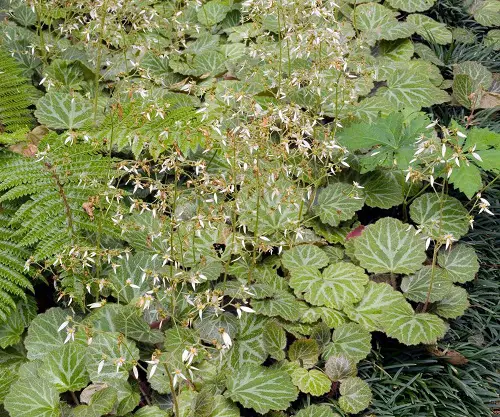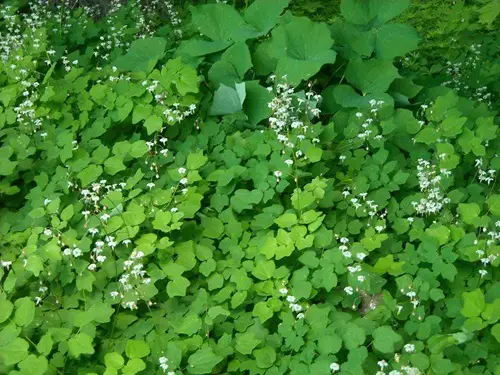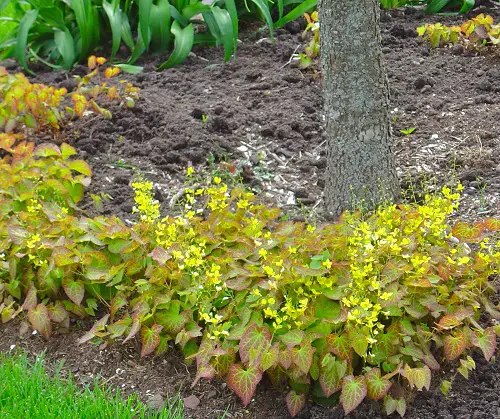Ground Covers lend a lush green depth to any landscape. But our selection is a notch higher, as these even Bloom in the Shade!
When blankets of green suddenly pop into a canvas of colors with the prettiest flowers, it is truly a sight to behold! The ground covers on this list aren’t just easy to grow; they thrive in the shade and produce mesmerizing blooms even in dimly lit spaces! Let’s dig in.
Ground Covers that Bloom in Shade
1. Sweet Woodruff

Botanical Name: Galium odoratum
USDA Zones: 4-8
This deciduous plant has an upright growth and aggressive spread, making it a quick-growing groundcover. Sweet woodruff is the way to go if you have a shadowy landscape canopied by trees and shrubs.
It adapts well to shade and, in spring, produces beautiful, dreamy white flowers that are even used to flavor wine in Europe.
2. Spotted Dead Nettle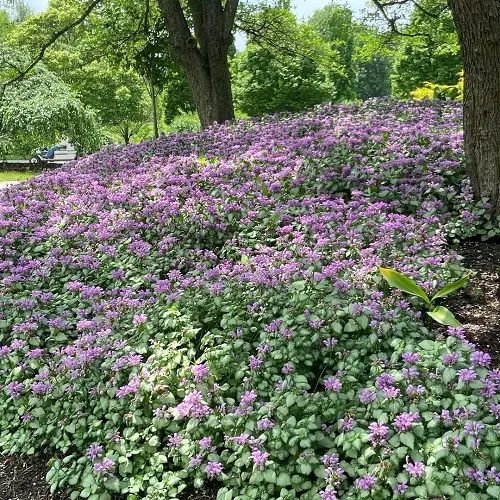
Botanical Name: Lamium maculatum
USDA Zones: 3-8
This ground cover has beautiful silvery white foliage and lilac to purple flowers that emerge in spring. Once this plant grows about 12 inches, it spreads rapidly and forms a thick and robust blanket.
When the plant is young, it needs regular hydration, but once mature, you can let the soil dry between waterings.
3. Bunchberry
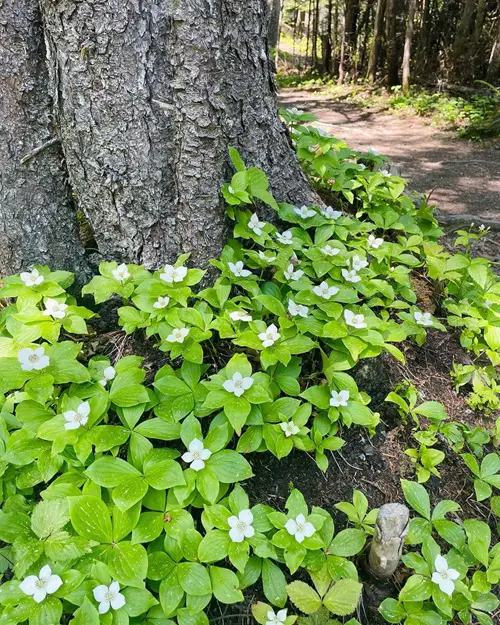
Botanical Name: Cornus canadensis
USDA Zones: 2-7
Bunchberry is a member of the dogwood family and grows best under shade and in acidic soil. It has rich green leaves and produces large white flowers in summer, followed by bright red edible berries.
This North American native shrub grows well in cooler climes. Its green foliage turns red and purple in fall, keeping things changing and interesting throughout your garden.
4. Dwarf Solomon’s Seal
Botanical Name: Polygonatum humile
USDA Zones: 5-8
This is a perfect ground cover for growing in the shade, especially under trees. Dwarf Solomon’s Seal thrives in spaces where tree roots deter other plants from growing. During spring, the plant produces compact bell-shaped flowers followed by purple-black fruits, which are toxic to consume.
However, its shoots can be boiled and eaten like asparagus. The plant spreads quickly from rhizomes in fertile soil and needs regular water in summer to thrive.
5. Lilyturf

Botanical Name: Liriope muscari
USDA Zones: 6-10
Lilyturf is another excellent ground cover with grass-like clump-forming foliage. This evergreen plant produces clusters of beautiful white to violet flowers even in the shade. It is relatively drought-tolerant and works well in rock gardens, slopes, and containers.
It also serves as a resource-efficient substitute for lawn grass. Ensure it gets an inch of water weekly, but never let the roots get soggy. And if you’re looking for lawn substitutes, here are more of them.
6. Strawberry Begonia
Botanical Name: Saxifraga stolonifera
USDA Zones: 6-9
The creeping green foliage and ability to spread quickly have given it the name mother of thousands and made it an excellent ground cover. It stands out with round, silver-veined leaves that bloom with white flowers in late spring.
This plant tolerates neglect, making it perfect for busy bees and lazy gardeners. It thrives in well-draining soil and is relatively pest-resistant. Check out these vines that make excellent ground covers.
7. Goldenstar

Botanical Name: Chrysogonum virginianum
USDA Zones: 5–8
When in bloom, the yellow daisy-like flowers of this lively plant lend a golden chartreuse shimmer across the landscape!
Goldenstar is a low-growing groundcover that thrives in hot summers in partial to full shade, with a little dose of morning sun and moist soil.
8. Vancouveria
Botanical Name: Vancouveria spp.
USDA Zones: 5–9
With tooth-edged pale green leaves and dainty tubular white blossoms, this plant looks like a rich green and white carpet when in full spread! Vancouveria grows best in humus-rich, fertile, slightly acidic, and well-draining soil.
Like most of the groundcovers mentioned here, it loves moist soil!
9. Creeping Thyme
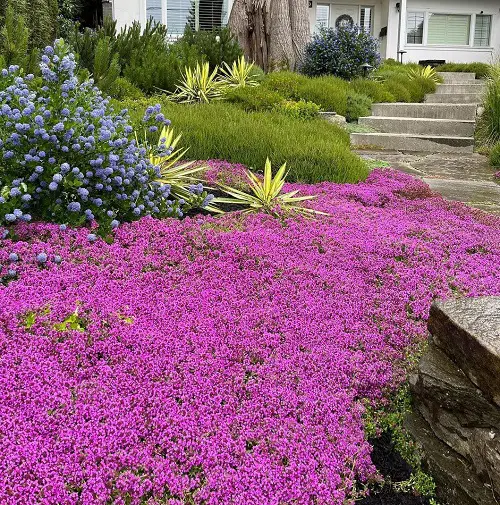
Botanical Name: Thymus serpyllum
USDA Zones: 2-9
Next on our list is a lovely ground cover that produces delicate white, pink, and purple blooms even in the shade and has wonderful uses in the kitchen! Excellent at creeping through any shaded areas, be it fences or pathways, it is a versatile choice for landscaping.
Grow it in any well-draining soil, and it can also be a great option for gardeners who enjoy and care for pollinator visits.
11. Bishop’s Hat
Botanical Name: Epimedium
USDA Zones: 5-8
Lastly on the list is the bishop’s hat, which is also known by the more “sinister name” barrenwort. Although the name’s origin is still debated, it is said to be called that because the roots of this plant make women barren. Native to China and Mediterranean regions, it thrives in not only deep shade but also drought-like conditions.
It makes a perfect groundcover because its shallow roots barely disturb other plants. It can be identified by its 4-pointed flowers, which emerge before its green or burgundy foliage.
Although it prefers a gloomy environment, it will also tolerate some sun in the northern hemisphere and well-drained and fertile soil.



